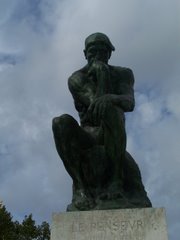Mad Max Fury Road – a 4 out of 10 on the JWO scale
Mad Max is truly a dark vision of our dystopian future. It picks up after the Thunderdome, where it is clear Max failed to keep the children in his care safe which has sent him into madness and savagery. Maybe at this point I am just becoming jaded about movies like this, after seeing one too many. (which I think ties into the Tomorrowland theme). This movie just had an idiotic or no plot and script. This movie seemed to be written with punk rockers and x games aficionados in mind. I really just didn’t get the guitar player with fire coming out of guitar as something that would happen in a dystopian nightmare. Would they really waste their energy on that. I know, I know, its not real, only a movie, but if there is complete disregard for reality, then, this is not a real future possibility and whole premise of the movie falls apart. In fact there were times in the movie I actually laughed ouut loud due to seeming absurdity in tthe movie The movie’s violence and noise just didn’t appeal to me. I did appreciate the feminist and ableist angle that the movie interjected. It was novel for this type of movie. But it wasn’t enough to offset ongoing death and destruction with little or no plot line. I like Tom Hardy and love Charlize Theron as actors but they didn’t have much to work with here.
Tomorrowland a 6 out of 10 on the JWO scale
Tomorrowland has one strike against it immediately, because going in, I saw this cynically as a way for a movie to promote the Disney Parks. From a business perspective I like it, but from a movie perspective it takes a bit of the purity away from the movie. Having said that, I enjoyed the movie. George Clooney puts in a typical George Clooney low key professional performance. Britt Roberston did a great job playing the innocent energetic youthful imaginative budding engineer protagonist who wakens Clooney from his slumber. The movie showed us two visions of the future, one idyllic, and another dystopic. I think you have to be physicist to understand the plot line regarding alternate universes and time shifting. I gave up trying to figure that out after awhile. The movie’s message for me is what we spend our time on, what we focus on, will determine our future. If we dwell on the negative, the negative future will occur. If we dwell on the positive and act with wonder about what is possible we are more likely to create a world filled with wonder. And by the way you can find wonder in Tomorrowland at Disney World. But I am sci-fi nerd and I appreciated the shots of the 64 worlds fair, and jet packs, and a multicultural, multiracial future and the questions about whether Artificial Intelligence can have emotion. It was a fun movie with a good message. Well worth watching.
